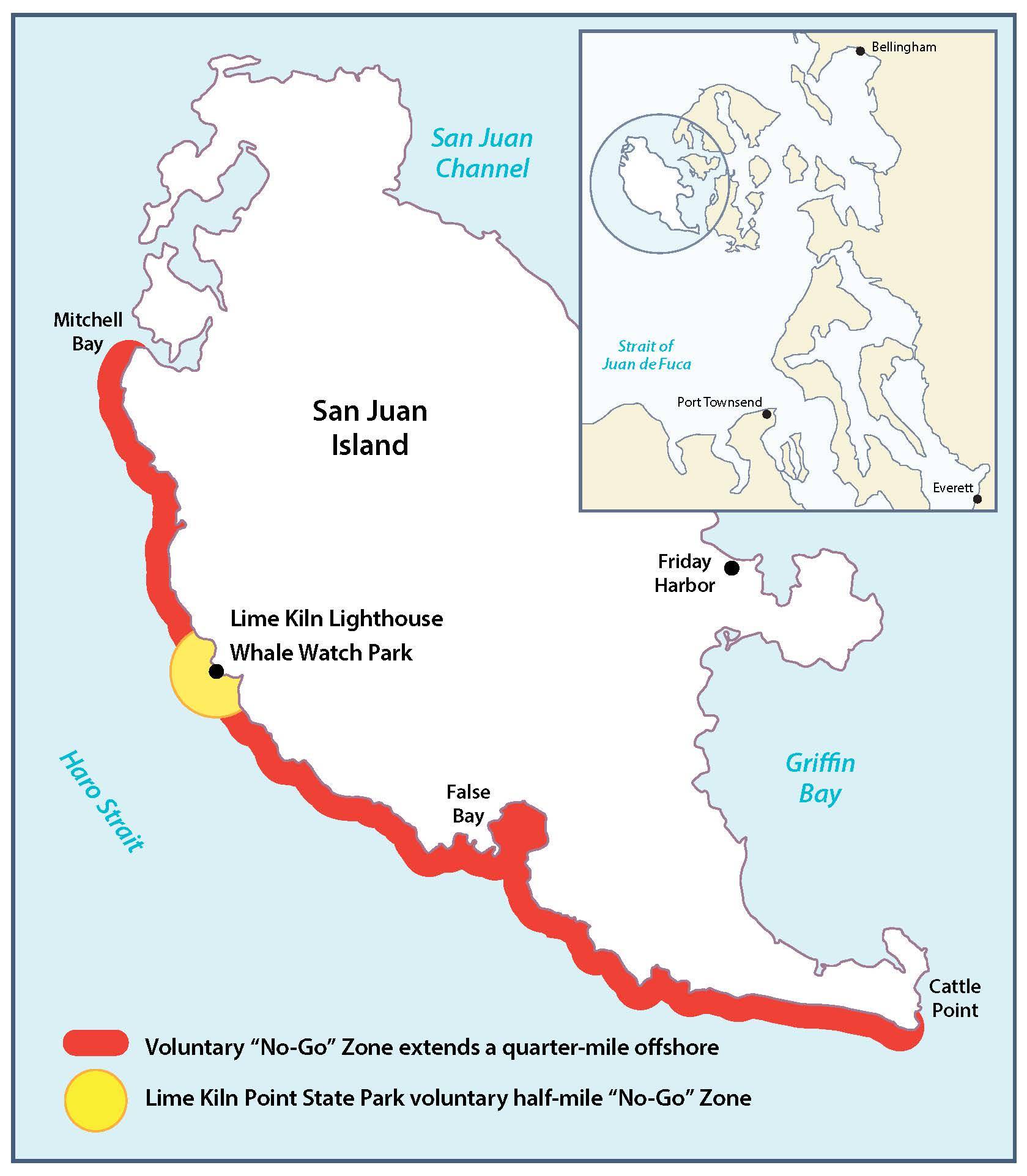Submitted by the Washington Department of Fish and Wildlife
State fish and wildlife managers are asking anglers and other boaters to avoid an area along the west side of San Juan Island to protect a dwindling population of Southern resident killer whales.
Despite state and federal government protection, the population of Southern resident killer whales has declined from 98 whales in 1995 to just 76 in December 2017. Major threats to the whales include a lack of prey – chinook salmon, in particular – disturbance from vessel traffic and noise, as well as toxic contaminants.
The Washington Department of Fish and Wildlife will be working with partner agencies and stakeholder groups to help educate people about the voluntary “no-go” zone, which applies to all recreational boats – fishing or otherwise – as well as commercial vessels.
The no-go zone is located on the west side of San Juan Island, including:
– From Mitchell Bay in the north to Cattle Point in the south, extending a quarter-mile offshore for the entire stretch.
– In an area around the Lime Kiln Lighthouse, the no-go zone extends further offshore – half of a mile.
A map of these areas is available on WDFW’s website at https://wdfw.wa.gov/conservation/orca, where boaters also can find existing regulations on properly operating vessels near orcas.
These waters represent the areas in the San Juan Islands that Southern resident killer whales most frequently use for foraging and socializing. To improve conditions for the whales, WDFW is asking vessel operators to stay out of these key areas to allow the whales a quiet area to feed.
“This voluntary no-go zone is a good step in helping to reduce human impacts in an important foraging area for Southern resident killer whales,” said Penny Becker, WDFW’s policy lead on killer whales.
In March, the governor signed an executive order creating a task force and directing WDFW and other state agencies to take immediate action to benefit Southern resident killer whales. In designing this year’s salmon fisheries, the department reduced fisheries in areas – such as the San Juan Islands, the Strait of Juan de Fuca, and Admiralty Inlet – important to orcas.
In late April, National Oceanic and Atmospheric Administration Fisheries asked the state to take additional action to protect Southern resident killer whales during the upcoming fishing season. In response, the state included the voluntary measure in a set of actions NOAA should consider as the federal agency develops authorization for Puget Sound salmon fisheries.
“This step will help support killer whale recovery and prevents a potential delay in federal approval for our salmon fisheries throughout the entire Sound,” said Ron Warren, head of WDFW’s fish program.
Warren acknowledged that this is a difficult request to make of anglers who fish the San Juans, given the reduced opportunities for salmon fishing in the area this year. But there are a variety of other salmon fisheries in Puget Sound this season.
In particular, he noted that in other areas of the Sound anglers have more opportunities to fish for coho salmon than in recent years. More information about this year’s salmon fisheries can be found at wdfw.wa.gov/fishing/northfalcon.
Warren said there is an exception for vessels participating in a commercial fishery targeting Fraser River sockeye that takes place in the northern portion of the no-go zone, given the limited number of commercial openings (six to eight days) this year.
As part of the governor’s directive, WDFW is working with NOAA and state agencies to increase hatchery production of salmon to benefit Southern resident killer whales. However, it will take three to four years for fish released from Washington hatcheries to be available as returning adults for the whales.
WDFW also will continue to work with tribal co-managers and other agencies to restore salmon habitat.
“Our efforts to recover killer whales ultimately will mean more salmon returning to Puget Sound each year, which will benefit anglers as well as orcas,” Warren said.
More information about the governor’s task force is available at www.governor.wa.gov/issues/issues/energy-environment/southern-resident-killer-whale-recovery-and-task-force.




